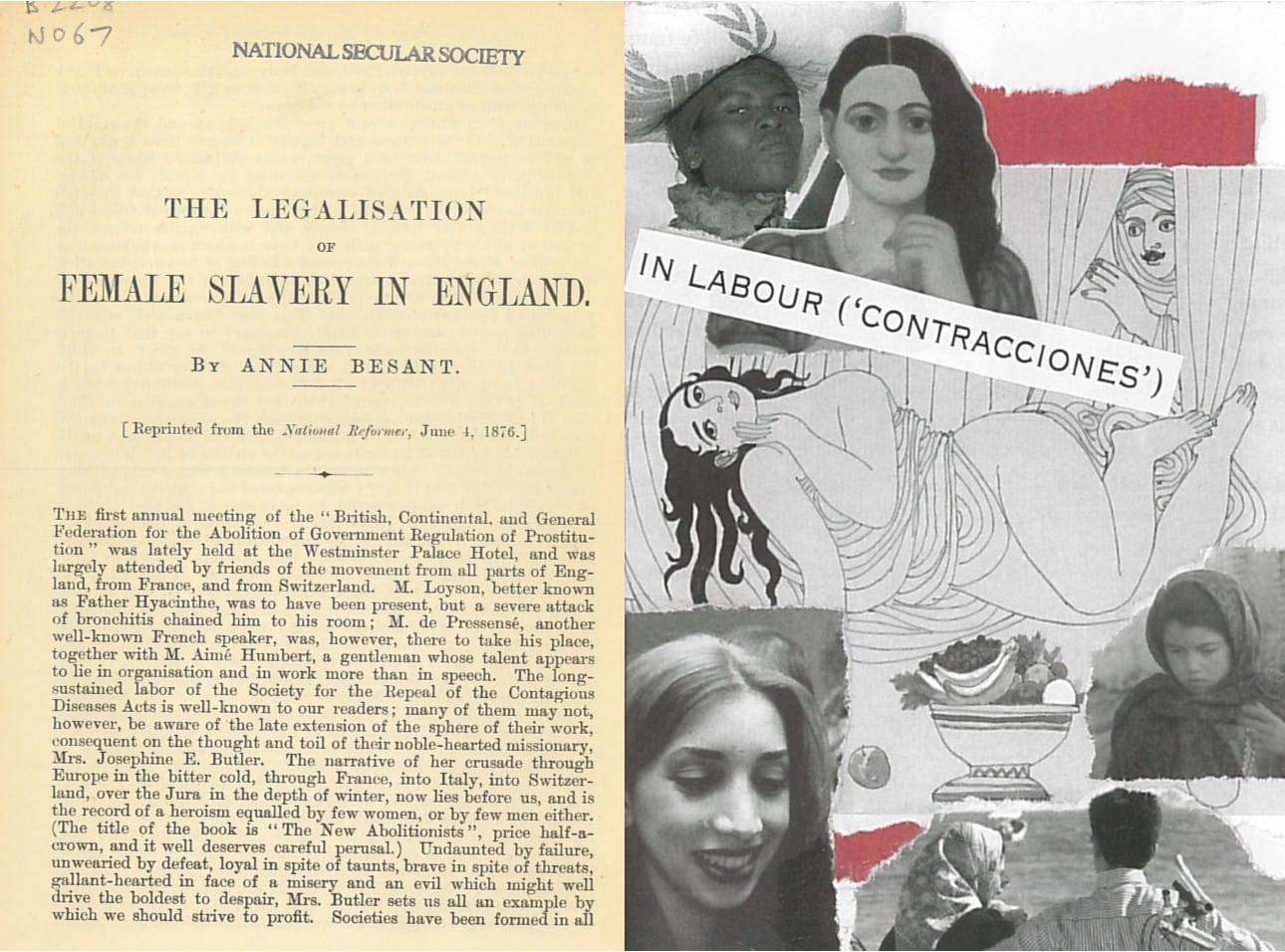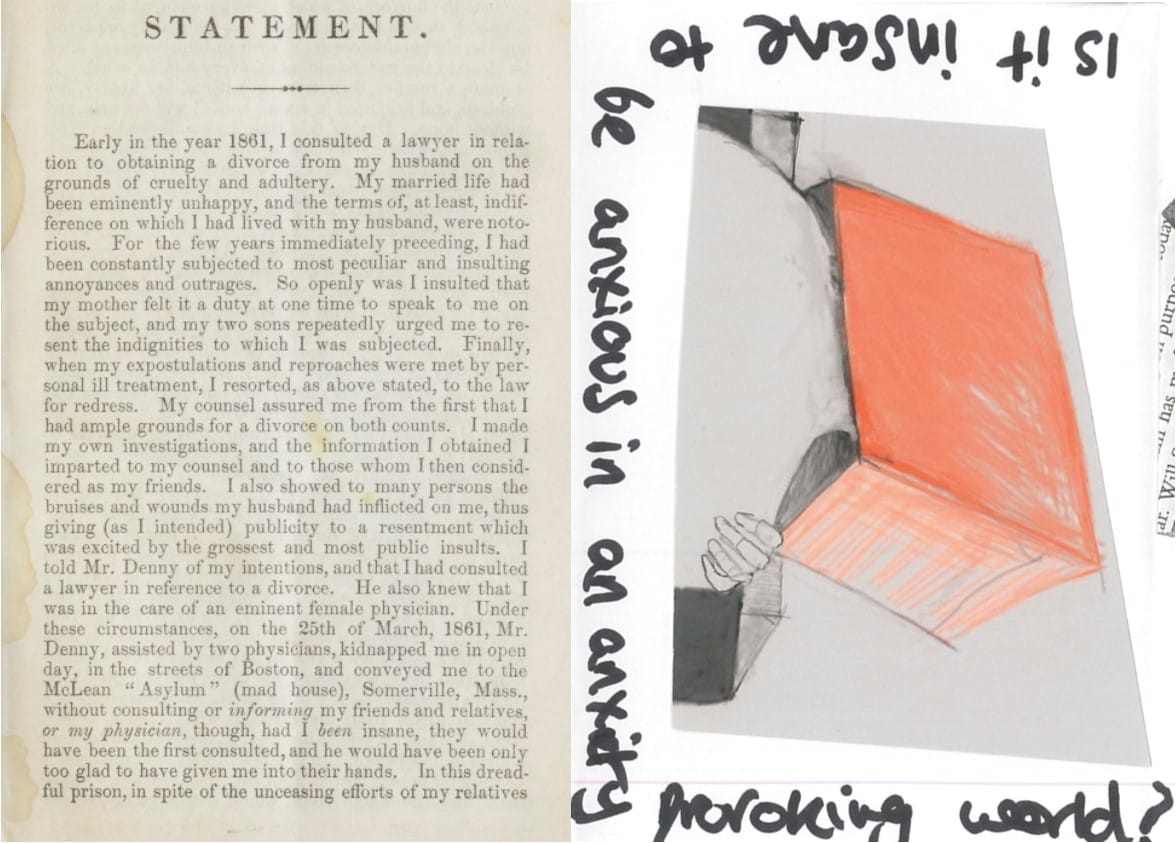Estimated reading time: 2 minutes

Heather’s zine, In Labour, took inspiration from Annie Besant’s The Legalisation of Female Slavery in England.
On the 13th of July we ran a zine-making workshop as part of the Heritage Lottery funded project, Victorian Blogging, taking our collection of nineteenth-century activist pamphlets as inspiration to create contemporary zines. Participants in the workshop have kindly allowed us to share their work. Our collection of over 1300 Victorian pamphlets covers topics such as freedom of the press, secularism, gender equality and political suffrage – many of which are still relevant today. The collection consists of the personal collection of our namesake Moncure Conway, pamphlets from the library of the National Secular Society and some other bound volumes of pamphlets.
Pamphlets first emerged in the 1500s, following the invention of the printing press. They were cheap, small-format publications disseminating alternative political, social and religious ideas. They rose in popularity in the following centuries, alongside improving literacy levels and printing technologies. By the nineteenth century, pamphlets were closely associated with radical thought. Many were written in fairly accessible language and sold affordably at around 1-6 pence. Small independent publishers, such as Charles Bradlaugh and Annie Besant’s Freethought Publishing Company, and self-publishing pamphleteers produced pamphlets on topics not widely dealt with in mainstream media.
Zines in many ways evolved out of pamphleteering culture, adopting similar formats and cheap production methods and sale prices. The earliest zines were 1930s sci-fi fanzines, which shared short sci-fi stories and comics, often with political messages. In the 1970s, the format was adopted by punks and other alternative subcultures to circulate ideas and information about new music and events. These became increasingly political and, by the early 1980s, were associated with radical ideas and political dissent. In the 1990s, the riot grrrl movement produced feminist zines that combined music and subculture news with political campaigning. Zines are still produced today, on a variety of topics – from veganism to vaginas.

Alex’s zine, How to Define Sanity, took inspiration from the pamphlet Statement of Lydia B. Denny.
There are many similarities between pamphlets and zines, but they are not exactly the same. Both are small-format and cheap to produce and buy; largely deal with political and social topics; and are both non- (and often anti-) mainstream. Whilst pamphlets are mostly text-based, zines tend to be more visual – they deliver their message through collage, illustration, comic strips, bold slogans, poetry and short essays. The tradition of self-publishing or using independent publishers for pamphleteering has adapted to a more informal, DIY form of production for zines. Zines are traditionally reproduced by photocopier onto coloured paper, but are increasingly made available online.
You can see the zines created in this workshop in our current library exhibition, Tue-Thu 10am-5pm until October 2018.
